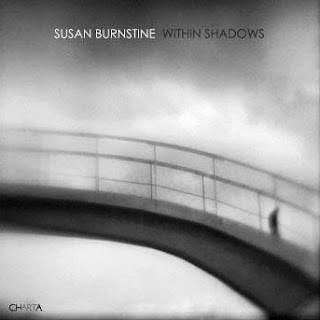Susan Burnstine is an American
photographer, now living in Los Angeles. Her distinctive style has been
developed by using home-made cameras and lenses produced from a variety of materials, which
invariably contain flaws resulting in peculiar effects,
predominantly varying degrees of blurring but also magnification of certain
areas of her images. Always shooting in monochrome, the effects of these lenses
are to produce dream-like, often nightmarish, almost abstract images in which
the subject matter can be ascertained, but is only partially resolved.
I first came across Burnstine’s
work as the cover photo and sleeve images for The Guillemots’ CD album ‘Walk
the River’, in which the title and feel of the album’s title track are (in my
eyes, at least) superbly reflected in her photographs (Images 1 and 2).
Image 1: Susan Burnstine, "Walk the River", Album Cover
Image 2: Susan Burnstine, "Walk the River", Sleeve Image
These images have the appeal of
creating a brooding atmosphere and at the time (2012) encouraged me to
investigate the deliberate introduction of blurring effects into my own images,
although I used ‘Photoshop’ rather than home-made lenses to achieve this. The
project never got off the ground, but now I’m considering again the deliberate
introduction of blurring and other ‘effects’ in order to try to generate more emotion
in some of the images for my current project. Blurring also refers to the
concept of memory, where memories become faded with time. I’ve already
introduced blurring into one of the images that I’m working with (which I may
or may not use) and I am also looking at deliberately blurring one or more of
the constituents of some other image montages. Will it work for me? If it
doesn’t I may not pursue the work any further, because then it will be unlikely
to work for the viewers of my images.
Susan Burnstine has produced two
photo books. The first, ‘Within Shadows’ (cover photo shown in Image 3), is very
expensive and difficult to get hold of, being out of print. Burnstine states that this work was prompted by powerful, nightmarish dreams that afflicted her during childhood and later during adulthood, particularly after she had been traumatised by the premature death of her mother.
Image 3: Susan Burnstine, Cover Photograph for "Within Shadows"
More recently I have obtained the second book, ‘Absence of Being’, which was prompted when the dreams returned, following the death of her father. She writes down the dreams when she wakes, then tries to represent them on film as a type of therapy. There are some particularly striking images in "Absence of Being", which consist mainly of urban landscapes. My favourite photograph, "Beyond the East River", is shown below (Image 4).
Image 4: Susan Burnstine, "Beyond the East River", from "Absence of Being"
Susan Burnstine's work deals with memory and loss in a unique manner. Her atmospheric images provoke an emotional response in the viewer and provide an example of how blurring can be used in a positive manner. Making images that produce an
emotional response from the viewer is one of the key aims (and arguably the
most important remaining aim) of my project and this work illustrates one way in which I could achieve this.




No comments:
Post a Comment